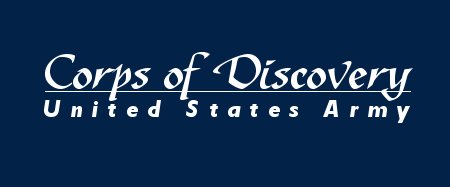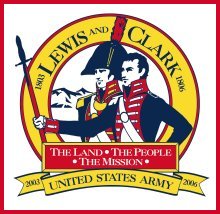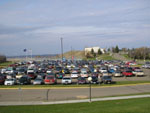
The “Circle of Cultures” Signature Event was held from 22 – 31 October on the ... [more]
|
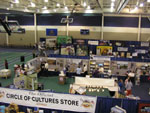
Exhibitors set up their booths in the field house.
|
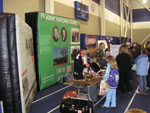
The Army National Guard
information booth was a popular attraction ... [more] |
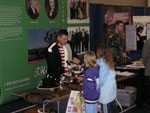
A member of the Army National Guard garbed in Jeffersonian Army uniform explains some ... [more]
|
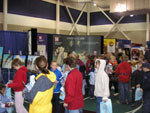
The U.S. Army Corps of Engineers information booth also drew the attention of many ... [more]
|
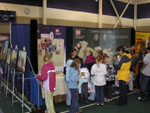
Many of the visitors to the U.S. Army Corps of Engineers information booth were school children ... [more]
|
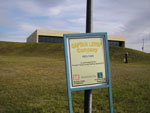
The U.S. Army Corps of Engineers also sponsored the “Captain Lewis’ ... [more]
|

One of the interpreters (wearing a brown and red overcoat issued specially to members ... [more]
|
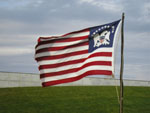
The variant of the United States flag that flew over the interpreters ... [more]
|
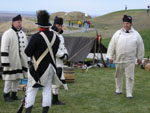
Several members of “Captain Lewis’ Company” in their authentic bivouac area. Note that the ... [more]
|
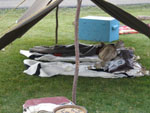
The enlisted men slept in tents when the expedition was not occupying more ... [more]
|
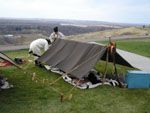
Another view of the Jeffersonian era version of the Army “pup tent”.
|
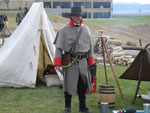
Here we can see a soldier standing in front of a replica of Captain Lewis’ tent.
|

“Captain Lewis’ Company” proved to be an extremely popular attraction at the Circle ... [more]
|
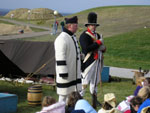
These interpreters are wearing both the full dress uniform and watch coat. The numeral “2” on the front ... [more]
|
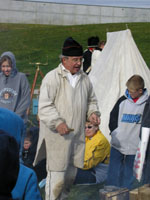
This interpreter is wearing a “fatigue shirt” commonly worn by Jeffersonian soldiers in ... [more]
|
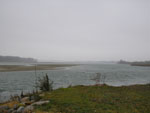
The Missouri River as seen from Fort Abraham Lincoln State Park. The St. Charles ... [more]
|
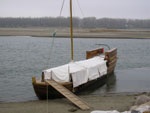
A rare view of the replica keelboat (Lewis and Clark always referred to it as a “barge” rather than ... [more]
|
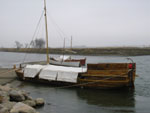
The keelboat and pirogues of the St. Charles Expedition tied up at Fort Abraham Lincoln State Park.
|
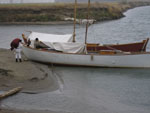
Two Jeffersonian soldiers are seen here loading some equipment on the White Pirogue.
|
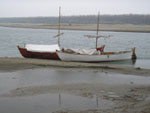
Another view of both the Red Pirogue and White Pirogue. They are very similar in appearance to ... [more]
|

Members of the expedition are seen here practicing military drill. |
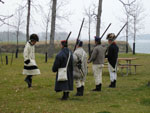
Another view of Jeffersonian interpreters maintaining their proficiency in drill. ... [more]
|
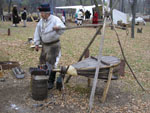
An interpreter is seen here with a portable blacksmith’s forge similar to the one taken by the ... [more] |
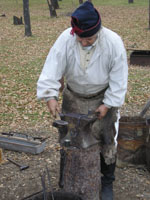
The forge employed a hand pumped bellows to heat up a fire. |

Private John Shields’ blacksmithing skills proved exceedingly useful to the expedition. He ... [more]
|
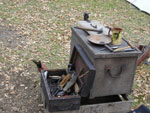
The blacksmith’s tool chest used by Privates Shields, Willard, and Bratton.
|

